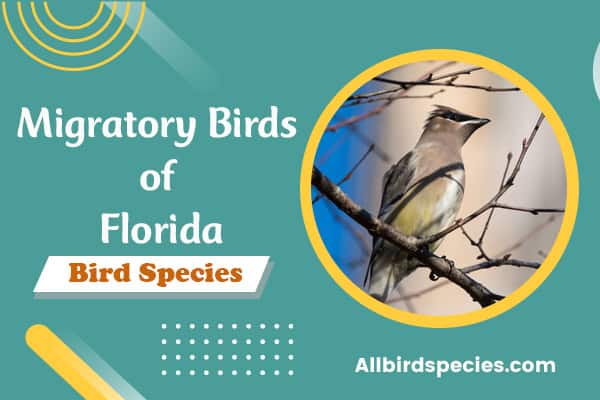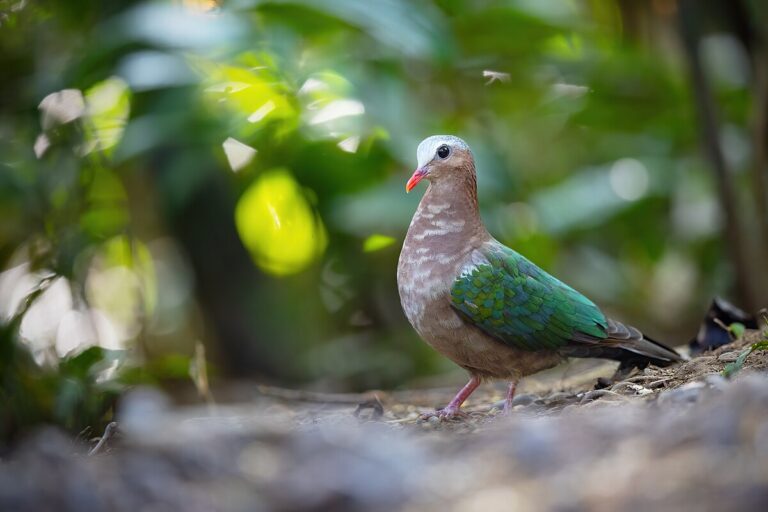Winter Migratory Birds of Florida – List & Pictures
Did you know about 50 million migratory birds visit Florida each winter? This shows how important our state is for bird migration. When it gets cold in the north, these birds come to Florida for warmth and food.
Florida’s warm weather and rich habitats draw many bird species each year. From quiet wetlands to sunny beaches, these birds find a home here. Let’s explore the amazing variety of birds, their journeys, and the beautiful places they visit.
Introduction to Winter Migratory Birds
As winter comes, we get to see a cool event: winter migratory birds arrive. This introduction to migratory birds shows how amazing their journeys are. They fly thousands of miles from the north to Florida’s warmth.
The winter bird migration makes our area more colorful. It brings birds that love Florida’s mild weather in the cold months.
From October to April, many species come to Florida. They look different because they’re not breeding. They find lots of food and good places to live here.
Migrating is key to their survival. It helps them live through the year. Knowing when and why they move helps us understand their role in nature.
| Aspect | Details |
|---|---|
| Timeframe of Migration | October to April |
| Typical Plumage | Non-breeding plumage |
| Habitat Preferences | Wetlands, forests, coastal areas |
| Main Attraction | Southern climates and food availability |
Florida’s nature is a key stop for these birds. It’s a vital part of their journey.
Why Do Birds Migrate?
Birds migrate for many reasons, showing their deep connection with their world. They move for food, better places to breed, and to escape harsh weather. When it gets cold and food is hard to find in the north, they head to places like Florida. There, they find plenty of food and a safe place to live.
Driving Factors for Migration
The main reasons birds migrate are:
- Food Availability: Birds move to find more food because of the seasons.
- Breeding Opportunities: They go to the best places to nest and raise their young.
- Weather Conditions: Birds leave when it gets too cold or snowy.
Impact of Climate on Migration Patterns
Climate greatly affects bird migration. Weather changes can change where birds go and when they go. For example, warmer weather might bring birds to Florida earlier than before. Florida’s warm climate is a key reason why some birds migrate there to escape the cold.
| Driving Factor | Description | Impact on Migration |
|---|---|---|
| Food Availability | Seasonal changes influence the availability of insects, seeds, and fruits. | Motivates birds to migrate south for warmer weather and richer resources. |
| Breeding Opportunities | Ideal conditions for nesting are sought after, including shelter and safety. | Encourages timely departures to ensure successful breeding. |
| Weather Conditions | Temperature and precipitation patterns affect habitat suitability. | Shifts routes or alters timing based on changing climates. |
Key Migratory Bird Habitats in Florida
Florida is a key spot for many wintering migratory birds. It has diverse landscapes that are vital for these birds. These places are crucial for their survival.
Wetlands and Mangrove Ecosystems
Florida’s wetlands and mangrove ecosystems are key for many migratory birds. They offer food, nesting spots, and safety from predators. Birds like the Roseate Spoonbill and Great Egret thrive here.
- Wetlands: Include marshes, swamps, and estuaries. They are rich in biodiversity and offer abundant food sources.
- Mangrove Ecosystems: Characterized by salt-tolerant trees that provide shelter and feeding grounds for countless bird species.
Coastal Regions and Sandy Beaches
Florida’s coastal areas and sandy beaches are also crucial for migratory birds. These places are perfect for birds to rest and refuel on their journey.
- Sandy Beaches: Provide essential foraging opportunities, especially for shorebirds like the Black-bellied Plover and Sanderling.
- Coastal Regions: Include bays, lagoons, and estuaries, which are teeming with marine life that supports the birds’ dietary needs.
| Habitat Type | Key Species | Features |
|---|---|---|
| Wetlands | Roseate Spoonbill, Great Egret | Diverse plant life, abundant water sources |
| Mangroves | Black-crowned Night-Heron, Osprey | Salt-tolerant trees, rich in aquatic life |
| Coastal Regions | Black-bellied Plover, Least Tern | Shallow waters, sandy flats for feeding |
| Sandy Beaches | Sanderling, Piping Plover | Nesting sites, food from tide pools |
Migratory Birds of Florida: An Overview
Florida is a key spot for many migratory birds. It’s where they stop and spend the winter. Let’s look at the different birds that come to Florida each year. We’ll see when they arrive and leave.
Types of Migratory Birds
Florida is home to many migratory birds. Here are some you might see:
- Waterfowl: Look for Northern Pintails and Canvasbacks in the wetlands.
- Shorebirds: Find Marbled Godwits and Red-shouldered Hawks on the beaches.
- Songbirds: Warblers like the Palm Warbler and Yellow-rumped Warbler brighten our landscapes.
- Raptors: Ospreys are among the birds of prey you might see.
Typical Patterns of Arrival and Departure
Knowing when migratory birds come and go is key for bird lovers. Some birds start arriving in late September. Others wait until December. They leave by April. Watching these patterns helps us plan our birdwatching trips.
Notable Winter Migratory Warblers
In Florida, four warblers catch the eye of bird lovers in winter. Each one has its own special traits and ways of living. Let’s look closer at the Palm Warbler, Yellow-rumped Warbler, Black-and-white Warbler, and the Orange-crowned Warbler.
1. Palm Warbler (Setophaga palmarum)
The Palm Warbler is known for its bright yellow belly and light brown back. It’s a small bird, about 5 to 5.5 inches long. You can find it in open places like fields and wetland edges, eating insects and berries.
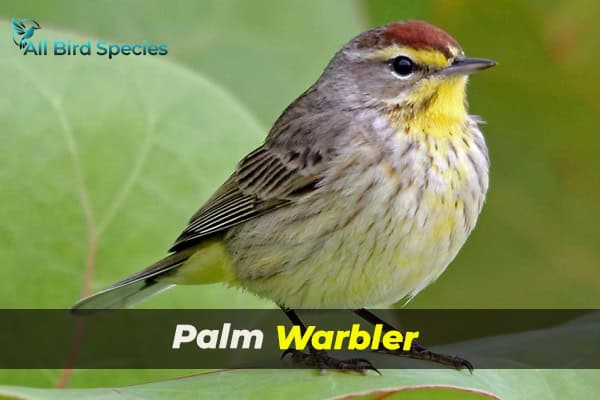
It’s famous for its tail-wagging when it searches for food.
2. Yellow-rumped Warbler (Setophaga coronata)
The Yellow-rumped Warbler is common in Florida. It has a mix of yellow, black, and gray feathers. It’s around 5.5 to 6.3 inches long and lives in many places, from forests to cities.
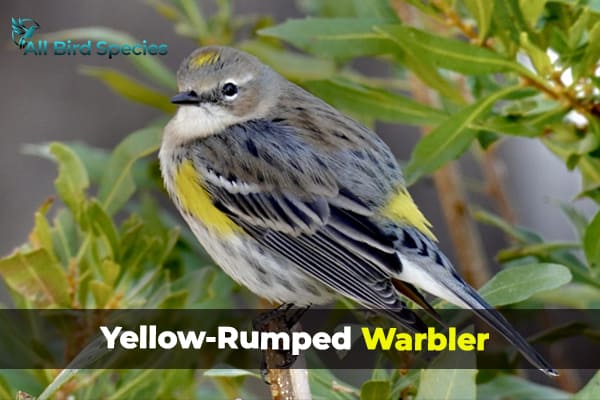
It eats insects, fruits, and seeds. Its ability to adapt makes it a favorite among birdwatchers.
3. Black-and-white Warbler (Mniotilta varia)
The Black-and-white Warbler stands out with its striking look. It’s a bit bigger, about 5.1 to 5.9 inches long. It likes wooded areas and eats insects and larvae from trees.
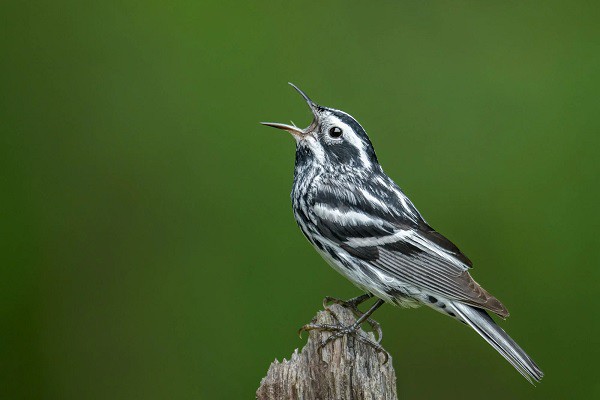
This warbler is quiet and moves quietly, unlike others.
4. Orange-crowned Warbler (Leiothlypis celata)
The Orange-crowned Warbler is hard to miss with its greenish look. It’s around 4.9 to 5.5 inches long. It lives in shrubs and eats insects and small fruits.
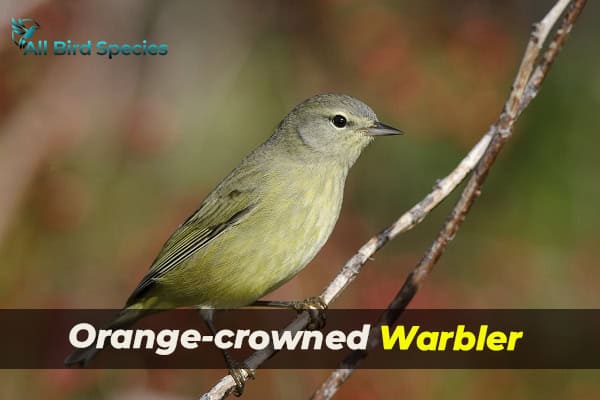
Learning about these warblers helps us appreciate Florida’s bird life and winter migrations. Each one adds something special to the state’s birdwatching scene.
| Warbler Species | Scientific Name | Average Length (inches) | Typical Habitat | Main Diet |
|---|---|---|---|---|
| Palm Warbler | Setophaga palmarum | 5 – 5.5 | Open fields and wetlands | Insects, berries |
| Yellow-rumped Warbler | Setophaga coronata | 5.5 – 6.3 | Pine forests, urban areas | Insects, fruits, seeds |
| Black-and-white Warbler | Mniotilta varia | 5.1 – 5.9 | Wooded areas | Insects, larvae |
| Orange-crowned Warbler | Leiothlypis celata | 4.9 – 5.5 | Shrubby areas | Insects, small fruits |
Exploring Florida’s Winter Waterbirds
Florida’s wetlands and coasts are home to many winter waterbirds. These birds are amazing to see during the cold months. Let’s look at three special birds: the Anhinga, Marbled Godwit, and Ruddy Turnstone.
5. Anhinga (Grus canadensis)
The Anhinga is a bird known for diving and its long neck. It’s often called the “snakebird.” You can see it moving smoothly over Florida’s waters. Anhingas eat fish and can dive up to 10 feet deep to catch them.
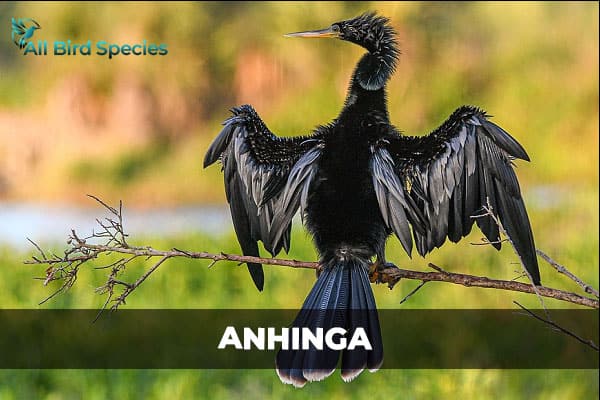
They have a special way of hunting. They stay underwater and then pop up to surprise fish. With a 3-foot wingspan, they dry their wings on branches, showing off their beautiful feathers.
6. Marbled Godwit (Limosa fedoa)
The Marbled Godwit has a long bill and colors that blend in with sandy shores. It lives in Florida’s mudflats, estuaries, and beaches, eating small creatures. Its long legs let it walk in deep water, and its sharp eyes help it find food.

During migration, Marbled Godwits fly a long way to get to their winter spots. This shows their amazing endurance.
7. Ruddy Turnstone (Arenaria interpres)
The Ruddy Turnstone is a small bird found in Florida’s coastal areas. It’s known for its unique way of finding food. It eats mollusks, crustaceans, and other beach creatures.
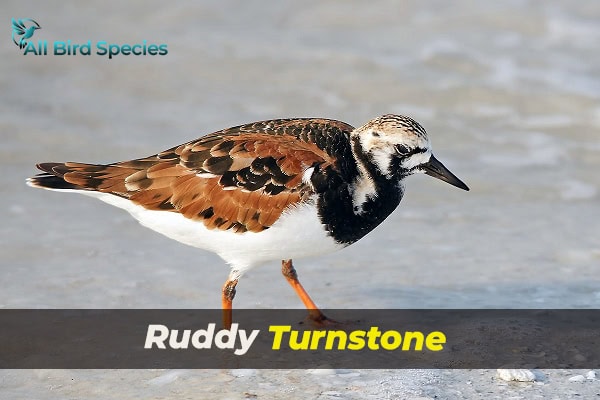
It flips over stones and shells with its bill to find food. Its bright feathers change with the seasons, making it a beautiful sight in winter.
Related Video:
Winter Migrating Ducks in Florida
Florida is a key spot for many winter migratory ducks. Each type brings its own beauty and ways to live in the state’s varied places. We’ll look at the Northern Pintail, Greater Scaup, and Red-breasted Merganser. We’ll see their looks, where they live, what they eat, and the challenges they face on their journey.
8. Northern Pintail (Anas acuta)
The Northern Pintail stands out with its long neck and elegant look. Males have chocolate-brown heads and white necks. Females are more calm in color. They like shallow wetlands and marshes, eating aquatic plants and seeds. In winter, they change their eating habits to find food, often in shallow waters.

9. Greater Scaup (Aythya marila)
The Greater Scaup is known for its round head. They live in Florida’s coastal waters and freshwater lakes in winter. Males have a shiny green head and white wings, looking beautiful. They eat mollusks and aquatic plants. Their skill at diving deep helps them survive, even where food is hard to find.
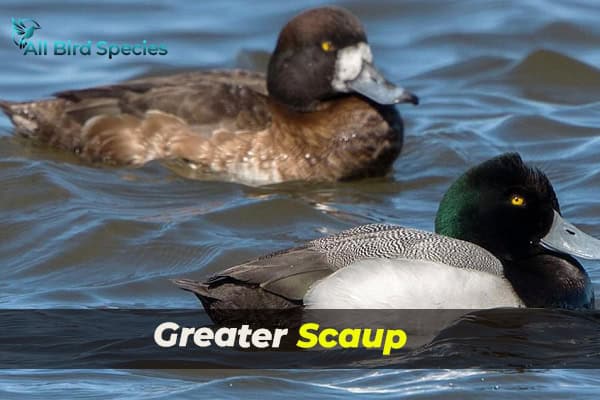
10. Red-breasted Merganser (Mergus serrator)
These birds have long, thin bodies and sharp bills, great for catching fish. In winter, they like coastal waters and rivers for finding fish. They are adaptable hunters, doing well in different places where food is easy to find.
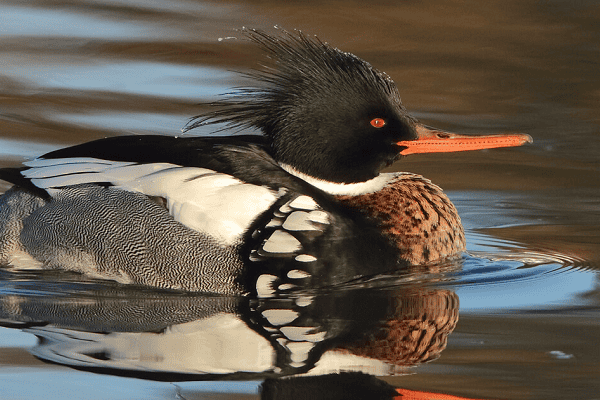
| Duck Species | Habitat | Diet | Notable Features |
|---|---|---|---|
| Northern Pintail | Shallow wetlands and marshes | Aquatic plants, seeds | Long neck, elegant silhouette |
| Greater Scaup | Coastal waters, freshwater lakes | Mollusks, aquatic vegetation | Glossy green head, white wings |
| Red-breasted Merganser | Coastal waters, rivers | Fish | Sharp bill, slender body |
Learning about these ducks helps us appreciate Florida’s winter birds and their important roles. Let’s keep exploring the amazing world of bird migration and the beauty it adds to our state.
Understanding Bird Migration Routes
Bird migration routes are amazing paths that many species follow each year. These paths are key for birds moving between their summer and winter homes. We’ll look into how these routes are made and Florida’s big part in bird migration.
Established Flyways and Patterns
Birds use certain flyways to migrate, shaped by geography and the environment. The main routes are the Atlantic, Central, and Pacific Flyways. Each flyway acts as a guide, helping birds travel north and south safely.
These paths are crucial for crossing long distances. They lead birds to places for rest, food, and nesting.
The Role of Florida in Migratory Paths
Florida is very important for bird migration. Many birds stop here on their long trips. The state’s different areas like wetlands, coasts, and forests offer what birds need.
During migration, birds come to Florida to get more energy. This makes it a key spot for them.
| Flyway | Key Birds | Significance |
|---|---|---|
| Atlantic Flyway | Snow Geese, Red-tailed Hawks | Connects breeding grounds from Canada to Florida |
| Central Flyway | Sandhill Cranes, American Avocets | Important for prairie and wetland species |
| Pacific Flyway | Western Sandpipers, California Gulls | Links coastal habitats from Alaska to Central America |
Understanding these patterns helps us see how birds migrate. Each flyway is more than a path; it’s a vital link for many bird species. This shows why we must protect places like Florida for them.
Conservation Status of Migratory Birds in Florida
Protecting the amazing migratory birds in Florida is key for keeping our nature rich. Many of these birds face big challenges from threats. It’s important to know these challenges to help protect them.
Threats to Migration
Habitat loss, climate change, and pollution are big threats to Florida’s birds. Building cities has destroyed important wetlands where birds live and find food. Climate changes mess with their travel paths, and pollution harms birds and their homes.
These dangers don’t just hurt the birds. They also affect the whole ecosystems they live in.
Conservation Efforts in Florida
Florida has many projects to save migratory birds. Groups like the Audubon Society and the Florida Fish and Wildlife Conservation Commission work hard. They fix habitats, protect them, and teach people why it’s important to save these birds.
They watch over bird populations and make safe places for endangered birds. Their work helps keep these species safe.
Best Locations for Birdwatching in Florida
Florida is a great place for birdwatchers. It has many spots to see migratory birds in their natural homes. We’ll look at some top places and give tips for a fun birdwatching trip.
Popular Birdwatching Spots
- Everglades National Park: This huge wetland is home to many birds, like the rare roseate spoonbill and the bright painted bunting. It has trails and spots to watch birds, making it perfect for birdwatchers.
- Big Cypress National Preserve: This area is full of life, with birds like the anhinga and herons. Kayaking here lets us see birds from a new view.
- Honeymoon Island State Park: On the Gulf Coast, this island is full of shorebirds and raptors. The beach and mangrove trails are great for taking pictures of birds.
- Paynes Prairie Preserve State Park: This park has wetlands and uplands, drawing in birds like the American bittern and great egret. We can hike or use a tower for great views.
What to Bring While Birdwatching
Here are some must-haves for birdwatching:
- Binoculars: These let us see birds up close without scaring them away.
- Field Guide: A guide to Florida birds helps us know what we’re looking at.
- Camera: Taking pictures of birds makes the experience even more fun.
- Water and Snacks: It’s important to stay hydrated and fed during long birdwatching trips.
Capturing the Beauty: Photography Tips for Birdwatchers
When we go birdwatching, taking great photos of migratory birds makes our experience even better. Learning some bird photography tips can really improve our skills. It’s key to have the right gear and settings for the best shots in the wild.
Using a telephoto lens lets us get close-up shots without scaring the birds. A lens with at least 300mm focal length is great for wildlife photos. We also need a strong tripod or monopod for stability and a fast shutter speed to capture flying birds.
Light changes fast in nature. It’s important to know how to adjust our camera settings. In bright sunlight, we can use a faster shutter speed to avoid overexposure. In low light, like at dawn or dusk, we might need a higher ISO to keep our photos clear.
- Research species: Knowing how different migratory birds act helps us get better shots.
- Use natural habitats: Taking photos of birds in their natural setting shows their beauty and behavior.
- Respect wildlife: It’s important to be ethical and disturb the birds as little as possible while taking photos.
With these tips, we can enjoy the amazing world of bird photography. We can capture special moments while respecting the birds and their homes. Happy birdwatching and photography!
Check Our Previous Articles:
| How to Attract Orioles to Your Yard |
| Common Woodpigeon |
| Woodpeckers in Montana |
| Hawks in Wisconsin |
| Backyard Birds of Hawaii |
Final Thoughts
Winter migratory birds are amazing creatures that play a big role in Florida’s nature. They travel long distances and adapt to different places in the state. From tiny warblers to beautiful waterfowl, they make our landscapes come alive.
Watching these birds in Florida during winter is a special chance to see their beauty. When we go birdwatching, we see how they face problems like losing their homes and climate change. We can help by supporting efforts to save their homes and fight climate change.

